Do you have a question about the Chrysler 2005 PT Cruiser Convertible and is the answer not in the manual?
Guidance on navigating and utilizing the manual's sections and index.
Crucial safety information and advisories for vehicle operation.
Information on locating and understanding the vehicle's unique VIN.
Advisories regarding potential impacts of vehicle modifications on safety.
Details on vehicle keys, immobilizer systems, alarms, and remote entry programming.
Operation of steering wheel lock, ignition interlock, and various door locking mechanisms.
Information on horn chirp, panic alarm, and power door lock operation.
Comprehensive guide to seat belts, airbags, and child safety in vehicle restraints.
Instructions for operating the vehicle's convertible top, including manual override.
Details on adjusting seats, seatback tilt, and head restraint positioning for comfort and safety.
Information on heated seats, folding rear seats, hood operation, and interior lighting features.
Explanation of various vehicle lighting controls and their operation.
Instructions for operating windshield wipers and washers, including maintenance.
Details on steering column adjustment, traction control system, and electronic speed control.
Information on Homelink garage door opener and vehicle power outlets.
Overview of console features, storage compartments, and pockets.
Visual guide to the vehicle's instrument panel components and their locations.
Diagrams illustrating the instrument cluster gauges and indicators for different models.
Explanation of critical dashboard indicators for fuel, charging, oil, alarms, temperature, brakes, airbags, and malfunctions.
Instructions for setting the digital clock and understanding radio reception and system basics.
Guide to operating the AM/FM radio, adjusting audio, tuning, and setting presets.
Instructions for using the cassette tape player, including playback and maintenance.
Instructions for operating the CD player, including disc insertion and playback controls.
Instructions for operating the CD changer, including disc selection and playback features.
Guide to operating the RBK radio, controlling volume, seeking stations, and tuning frequencies.
Instructions for adjusting audio balance, fade, tone, and setting radio presets.
Instructions for operating the CD player, including disc insertion and basic functions.
Details on CD player controls like seek, scan, and disc loading/ejecting.
Instructions for operating the CD changer, including disc selection and playback controls.
Guide to operating the RBQ radio, controlling volume, seeking stations, and tuning frequencies.
Instructions for adjusting audio balance, fade, tone, and setting radio presets.
Instructions for operating the CD player, including disc insertion and basic functions.
Information on CD player features like fast forward, random play, and program type selection.
Guidelines for maintaining cassette tapes and the player for optimal performance.
Recommendations for keeping CD/DVD discs and players in good condition.
Advice on potential radio interference from cellular phones and how to mitigate it.
Explanation of the air conditioning system and how to control fan speed and compressor engagement.
Details on selecting different modes for directing airflow within the cabin.
Instructions on adjusting the direction and flow of air from instrument panel outlets.
How to regulate cabin temperature and select air intake modes.
Advice on optimizing climate control use for different weather conditions and comfort.
Instructions for operating side window demisters and the rear window defroster.
Essential steps for starting the vehicle with automatic and manual transmissions.
Guidance for starting in extreme cold and troubleshooting engine start failures.
Information on engine idle speed after starting and proper turbocharger cool-down procedures.
Detailed explanation of automatic transaxle operation, interlocks, and gear selection.
Instructions for using the AutoStick manual shifting feature for enhanced vehicle control.
Guidance on operating the manual transaxle, including recommended shift speeds and downshifting techniques.
Information on parking brake operation, brake system components, and hose inspection.
Explanation of the ABS system, its benefits, and how it functions during braking.
Details on the power steering system and how it functions if power assist is lost.
Explanation of the Traction Control System's function in improving acceleration and steering on slippery surfaces.
Comprehensive guide to tire safety, maintenance, markings, pressure, and replacement.
Essential information on fuel types, octane ratings, additives, safety precautions, and fueling procedures.
Guidelines for proper vehicle loading, trailer towing limits, and warranty considerations.
Instructions for using the hazard warning flashers for emergency signaling.
Steps to take if the vehicle's engine begins to overheat to prevent damage.
Detailed instructions for safely lifting the vehicle and changing a tire, including component locations.
Step-by-step guide for safely jump-starting a vehicle with a low battery.
Techniques for safe acceleration and maintaining traction on wet, snowy, or icy roads.
Methods for safely rocking the vehicle free if it becomes stuck in mud, sand, or snow.
Guidelines for safely towing a disabled vehicle with automatic and manual transmissions.
Procedure to manually raise the convertible top in case of electrical failure.
Visual identification of key components within the engine compartments for different engine types.
Explanation of the OBD II system, its function, and the Malfunction Indicator Light.
Information on vehicle emissions testing requirements and how to check OBD system readiness.
Recommendations for using genuine parts and utilizing authorized dealer services.
Guidelines for performing essential vehicle maintenance, focusing on engine oil checks and changes.
Maintenance procedures for drive belts, spark plugs, ignition system, and emission control components.
Information on the maintenance-free battery and precautions during servicing.
Recommendations for servicing the air conditioning system for optimal performance.
Maintenance checks for various vehicle fluids, systems, and components including brakes and steering.
Procedures for maintaining automatic and manual transaxle fluid levels and types.
Guidelines for cleaning and protecting the vehicle's body, paint, convertible top, and weather strips.
Location and identification of fuses in the underhood and interior fuse panels.
Instructions for replacing various interior and exterior light bulbs.
Step-by-step instructions for replacing headlight bulbs.
Procedures for replacing bulbs in front park/turn signals, fog lights, tail/stop, and backup lights.
Table listing approximate fluid capacities for the vehicle's fuel, oil, and cooling system.
Specifications for recommended engine fluids, lubricants, and genuine parts.
Scheduled maintenance for the emission control system to ensure proper function.
Overview of the three maintenance schedules (A-Non Turbo, A-Turbo, B-All Engines) based on driving conditions.
Maintenance intervals for all engines under severe operating conditions.
Maintenance intervals for non-turbo engines under normal operating conditions.
Maintenance intervals for turbo-charged engines under normal operating conditions.
Tips for preparing for service appointments and communicating with service advisors.
Steps for resolving concerns, contacting customer centers, and understanding warranty coverage.
Information on genuine Mopar parts and procedures for reporting vehicle safety defects.
Resources for ordering manuals and understanding tire quality grading categories.
Explanation of DOT tire quality grades for treadwear, traction, and temperature resistance.
| Brand | Chrysler |
|---|---|
| Model | 2005 PT Cruiser Convertible |
| Category | Automobile |
| Language | English |
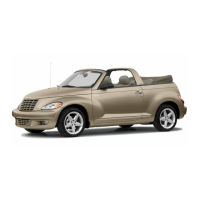
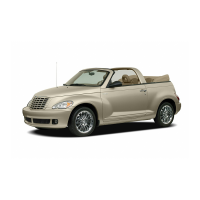
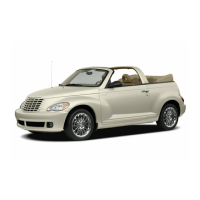

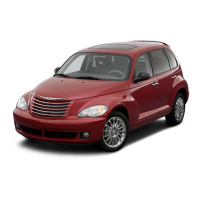

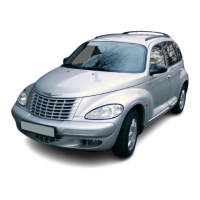
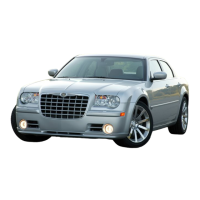
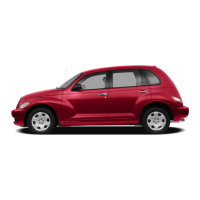


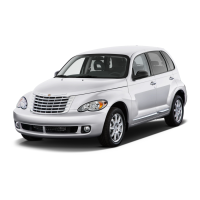
